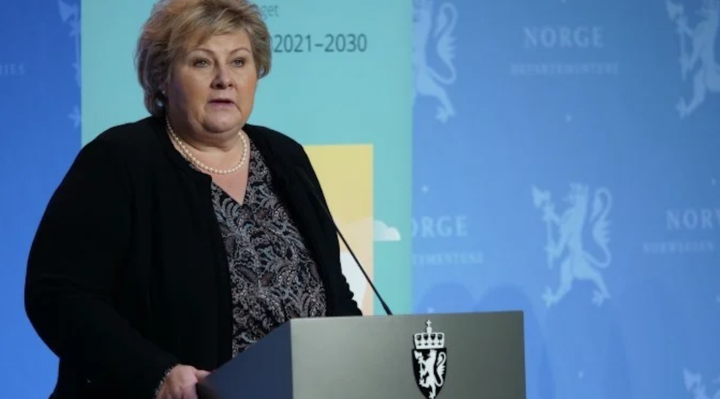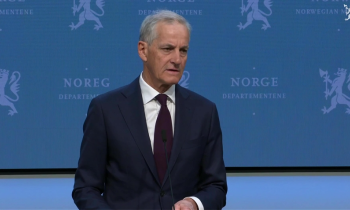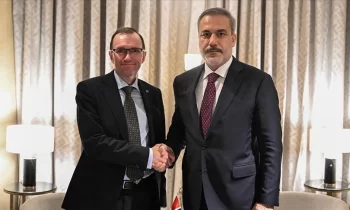Norway is committed to achieving its emission reduction target under the Paris Agreement. Today, the Government is presenting a white paper describing its action plan for transformation of Norwegian society as a whole by 2030. The plan shows how Norway will achieve its climate target and at the same time create green growth.
“Under this Government, Norway has reduced its greenhouse gas emissions, and this progress will continue. This climate action plan will give new momentum to Norwegian climate policy. For the first time, a government is putting forward a compelling, comprehensive plan for cutting emissions in every sector. We must make sure that it pays to cut greenhouse gas emissions,” said Minister of Climate and Environment Sveinung Rotevatn.
The main emphasis of the climate action plan is on emissions that are not included in the Emissions Trading System, or non-ETS emissions. These include emissions from transport, waste, agriculture and buildings, and some emissions from industrial production and the oil and gas industry.

It also deals with the EU Emissions Trading System, which applies to the bulk of emissions from industrial production and the oil and gas industry. In addition, the action plan discusses CO2 removals and emissions in the land-use, land-use change and forestry (LULUCF) sector.
“This action plan will enable us to exceed Norway’s assigned target from the EU for non-ETS emissions, which is 40 %, and we will achieve this through domestic emission cuts,”said Mr Rotevatn.
The main policy instruments in the climate action plan are taxation of greenhouse gas emissions, regulatory measures, climate-related requirements in public procurement processes, information on climate-friendly options, financial support for the development of new technology, and initiatives to promote research and innovation.
The Government intends to make greater use of climate-related requirements in public procurement processes. Requirements for zero-emission solutions will be introduced for passenger cars and small vans in 2022, and for local buses from 2025. Criteria relating to low- or zero-emission solutions will also be introduced for ferry services and high-speed passenger vessel services.
The sales volume of biofuels for road traffic will be maintained to ensure cuts in emissions from the fossil vehicles that are still in use. The Government will introduce biofuel quota obligations for offroad diesel and fuel for shipping from 2022. Vehicle taxes and other policy instruments will be designed so that they continue to provide incentives to choose zero-emission vehicles.
Enova has been given a clearer climate profile, so that it will contribute towards Norway’s emission reduction commitment for non-ETS emissions and Norway’s transition to a low-emission society.
The Government will use the letter of intent it has signed with the agricultural organisations as a basis for climate-related work in this sector in the years ahead.
The white paper also announces a gradual increase in the carbon tax rate from its current level of about NOK 590 to NOK 2000 per tonne CO2equivalents in 2030. This will progressively increase the cost of emitting CO2 and give stronger incentives to reduce emissions. The Government’s policy is not to increase the overall level of taxation. Any tax increase will therefore be offset by reducing other taxes correspondingly.
“Climate policy is the sum of all our efforts – how we transform Norway and equip the country for the future. We will cut emissions and enhance removals of CO2 in a way that transforms Norway and promotes green growth. To achieve this, we need an industrial sector that is greener, smarter and more innovative,”said Prime Minister Erna Solberg.
“The Government is presenting an action plan for achieving Norway’s climate target for 2030. We will continue to reduce Norway’s greenhouse gas emissions, and shape a society that will provide jobs for the future. This will offer freedom and opportunities for everyone,” said Minister of Education and Integration Guri Melby.
“We all have a responsibility for each other, for the poorest people in the world and for future generations. The climate action plan will contribute to an equitable transformation process, so that Norway takes its share of the responsibility,” said Minister of Children and Families Kjell Ingolf Ropstad.
EU climate legislation
EU climate legislation
Norway has entered into an agreement with the EU to take part in EU climate legislation in the period 2012–2030. This consists of three pieces of legislation:
- The Effort Sharing Regulation for non-ETS emissions: this assigns each country a binding target for reducing emissions from transport, buildings, agriculture, waste, and some emissions from the oil and gas industry and industrial production. Under the current regulation, overall emissions in the non-ETS sector in the EU are to be reduced by 30 % by 2030. Norway’s national target is an emissions cut of 40 %, either in Norway or in other European countries.
- The land-use, land-use change and forestry (LULUCF) regulation:the regulation sets out accounting rules for uptake and removals of CO2 in the LULUCF sector. The legislation sets out an obligation to ensure that overall greenhouse gas emissions from land use and forestry do not exceed removals (this is known as the ‘no-debit’ rule).
- The EU Emissions Trading System (EU ETS) applies to installations in manufacturing, the petroleum industry, power and heat generation and domestic aviation. There is a cap on the total volume of greenhouse gas emissions that may be emitted. Installations can trade emission allowances with each other within the system. The cap, or number of allowances, is being reduced gradually so that total emissions fall over time. Under the current legislation, emissions are to be reduced by 43 % by 2030.
Download all the proposed policies in detail here (Norwegian only – PDF)Ministry of Climate and Environment



